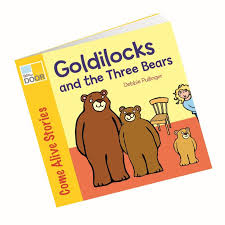As practitioners, we are only too aware of the importance of children engaging with vocabulary and the rules of language through continuous exposure to language, music, and books.
Aistear the Irish Curriculum Framework places a thematic focus on communication and the value this plays in enhancing children’s development in Early Education, raising awareness to the fact that communication should be acknowledged as being verbal and non-verbal experiences, social and emotional interactions, reading social cues and being able to successfully engage with others.
The child’s ability to communicate effectively is vital for their successful understanding of not only their own emotions and self-awareness, ensuring positive wellbeing, but for underpinning concepts in every other area of development including cognitive awareness.
It is in a supportive pedagogical, child-friendly environment, that we help promote these experiences for children. Therefore it is important to acknowledge, that if a child is to pick up and engage with new vocabulary, they need an environment that encourages active involvement with activities that support this development.
For example, children should be encouraged to independently access books, and engage with storytelling; they should be provided with opportunities to verbalise their own stories as well as listen to the adult reading, with Paley (2004), highlighting the value of a child-friendly pedagogy supporting dialogic reading activities, and the child is actively involved in the reading and storytelling activities, promoting a creative and imaginative mind.
REGISTER NOW: Free Early Years Webinar on Nurturing Pedagogy with Nóirín Hayes
.jpeg?width=511&name=Board%20Books%20(3).jpeg)
The same applies when consideration is given to opportunities for interaction, with children being encouraged to speak, talk and engage with others through play and group activities, these opportunities extend possibilities of asking questions, looking at, sharing, and discussing picture books or their own artwork.
It is by engaging with books that children learn to turn pages, and to understand the concept of written language, mark making, symbolic representation (Bruner,1978), and thus the concept of telling a story becomes an understanding that language and words have meaning, promoting innovative and critical thinkers, and encouraging that imaginative mind that makes for a successful and explorative problem solver in the adult years.
Historically children of this age would have been subjected to only fiction, however, research shows us that ideally, children should engage with both fiction and non-fiction books (Bruce,1987), to help promote not only language development, but the underpinning concepts of different areas of learning, for example, Science, Maths, Engineering and encourage the Language of STEAM Education (Hartman, 2020).
.jpeg?width=508&name=Peer%20reading%20(2).jpeg)
Non-Fiction Books Supporting the Language of STEAM
Books are a useful resource when introducing the language of STEAM and emergent concepts to children while providing stimulating stories that fire up the child’s curiosity and imagination.
For example, books about farms and farmers, machinery, animals, different countries, foods, wildlife, all provide introductions into the world of science and the world around us, and children can relate these experiences to their real-life, recalling and retrieving recently embedded concepts to extend their understanding (Vygotsky).
During these interactions, a supportive pedagogical approach to language development offers opportunities for the children to ask questions relating to the How?, Why? And where? therefore promoting the inquisitive concepts which underpin the development of a scientific thinker. Along with this comes the vocabulary to support this emerging STEAM concept.
READ MORE: Aistear in the Early Years: Supporting a Montessori Pedagogy
Board Books, or textured books, such as Welcome to our world, or Five little ducks or Under the Sea, allow younger children opportunities to engage with the underpinning foundations of science, new life; resulting in the child’s ability to categorise the different characteristics of animals, sounds they make, where they live, pets, zoo animals, animals that live in the sea, the food they eat and so the child moves through the stages of cognitive development supported by Piaget(1936); with Vygotsky highlighting the importance of language in reinforcing concepts and promoting thought process in children (1962).
Through the provision of sensory textured books, children not only see, but explore different materials while they learn, developing language such as rough, smooth, soft, and once again here we see the underpinning concepts of science and STEAM language.

Fiction Books Supporting the Language of STEAM
Steam concepts can also be found embedded in the text of many fictional children’s books, for example, one that springs to mind is that of Goldilocks and the Three bears, introducing elements of both Science and Maths, with embedded aspects of texture, size, and sensory experiences, and introducing STEAM vocabulary such as hot, cold, bigger, smaller; and weight when the smaller chair breaks under the weight of Goldilocks as she sits down to try it out, and so our children become aware of heavy, heavier, strong, stronger and so on. Or the Very Hungry Caterpillar and Goodnight Moon both also engage with STEAM language concepts for the younger child.
In the child-friendly environment where there is an awareness of the importance of a suitable pedagogical approach to support children as active agents in their own learning; providing opportunities to explore and expand their knowledge, this should and will happen naturally.
Fiction books will help develop and build an inquisitive mind as the children begin to explore pages filled with pictures, colour, and symbols, while the teacher asks questions and opens up discussion; but also encourages and provides opportunities for children to ask questions from both Adult and peers and move at their own pace, reinforcing concepts which are evident on a daily basis.

READ MORE: Aistear Framing the Multifaceted Pedagogies of Early Education in Ireland
The Role of the Practitioner
Young children are born ready to learn, empty vessels waiting to be filled (Locke).
From an early age, their brains like sponges absorb every piece of information and experience they encounter, and as Adults we play a vital role in influencing these emergent concepts and helping children master not only communication skills to ensure our children are resilient and independent, promoting positive wellbeing, but also support STEAM learning and the language which goes with it, enhancing the developmental concepts required to become competent, innovative and creative thinkers, able to cope with problems and resolve issues, without an over-dependence on the adults around them.
This makes for strong resilient, emotionally intelligent individuals, with the life skills they need to become successful adults (NYCI, 2020).
Through a supportive child-friendly pedagogy, providing a language-rich environment, the adult can help children from a very early age develop the underpinning concepts and skills they need to become inquisitive learners.
Steam Education is a key component in children’s learning, it is evident in everything we do, while promoting early language and communication, from asking questions, to reading or creating stories, fictional and non-fictional, and preparing the child for life in the 21st century.
Each opportunity to explore, independently solve problems, ask questions, or learn new language, reinforces the understanding of the world around them, so children should be surrounded by a pedagogy of opportunity and independent engagement.
Therefore, the adult's role should be to facilitate, to engage the child in discussion, allow them to share experiences, and open up new naturally occurring opportunities to share their own stories from real-life experiences, or books, Stories, and pictures that introduce the embedded concepts of STEAM education and language.
Further Reading
Bruce, T. (1987) Early Childhood Education, UK: Hodder and Stanton.
Bruner, J. (1978) The role of Dialogue in Language Acquisition, New York: Springer-Verlag.
Hartman, S. (2020) Full STEAM Ahead: Creating interdisciplinary informal learning opportunities in STEAM Teacher Education, (54) (1).
NYCI (2020) ‘STEAM in Youth Work Support Services; Report on a final evaluation survey’, Science Foundation of Ireland (SFI).
Piaget, J. (1936) Origins of Intelligence in the child, London: Routledge & Kegan Paul.
Vygotsky, L. (1962) Thought and Language, The MIT Press.
About the Author
Marguerita Magennis Ph.D. MA. BA Hons, Course Coordinator Masters in Early Childhood Studies & Lead Lecturer BA Hons degree Early Childhood Studies at Portobello Institute. Read more on Dr M's Thought's blog here.



%20(4).png?width=1200&name=BANNER%20HOPIN%20E_Y%20(1000%20x%20500%20px)%20(4).png)
.png?width=352&name=Michelle%20-%20KZ%20images%20(1).png)
-Jul-24-2025-05-55-36-8571-PM.png?width=352&name=Fashion%20(2)-Jul-24-2025-05-55-36-8571-PM.png)